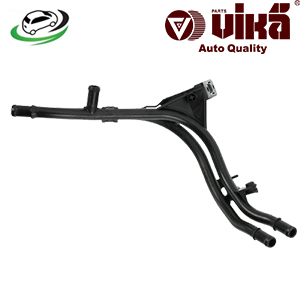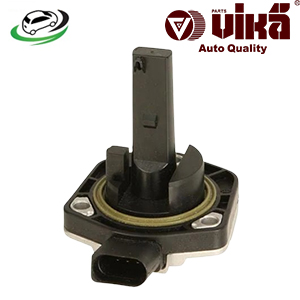-4%
Get Engine Oil Level Sender Sensor Audi A1/A2/A3/A4/A6/A8/Q7/TT/RS6 / VW Beetle/Golf/Jetta/Passat/Scirocco/Polo/Touareg 1J0907660C
The engine oil level sender sensor is a critical component in modern vehicles, responsible for monitoring the engine oil level and ensuring that it stays within the optimal range for safe and efficient engine operation. This sensor plays a vital role in protecting the engine from damage due to low oil levels and helps maintain overall vehicle performance. Here’s an in-depth look at the construction, function, benefits, common issues, signs of failure, and maintenance of the engine oil level sender sensor.
Construction and Function of an Engine Oil Level Sender Sensor
Construction:
- Materials:
- Metal Housing: The sensor is typically housed in a durable metal casing to protect it from harsh engine conditions.
- Electronic Components: Inside, it contains various electronic components such as resistors, capacitors, and circuitry that help it measure oil levels accurately.
- Float Mechanism: Many sensors use a float mechanism that moves with the oil level, connected to an electrical contact that changes resistance based on the float’s position.
- Temperature Sensor: Some sensors also include a temperature sensor to provide additional data about the oil’s condition.
- Design:
- Direct Measurement: The sensor is usually mounted in the oil pan or integrated into the oil dipstick to directly measure the oil level.
- Wiring: It is connected to the vehicle’s onboard computer system through wiring, transmitting real-time data about the oil level.
Function:
- Oil Level Monitoring:
- Continuous Measurement: The sensor continuously monitors the oil level in the engine, ensuring it stays within the optimal range.
- Data Transmission: It transmits this data to the vehicle’s onboard computer, which processes the information and displays it to the driver via the dashboard.
- Warning System:
- Low Oil Warning: If the oil level drops below a certain threshold, the sensor triggers a warning light or message on the dashboard to alert the driver.
- Preventive Alerts: It can also provide early warnings if the oil level is approaching the minimum safe limit, allowing the driver to take corrective action before serious damage occurs.
Benefits of an Engine Oil Level Sender Sensor
- Engine Protection:
- Preventing Damage: By monitoring oil levels and alerting the driver to low oil conditions, the sensor helps prevent engine damage caused by inadequate lubrication.
- Early Detection: Early detection of low oil levels can prevent more severe issues, such as engine overheating or seizing.
- Convenience:
- Real-Time Monitoring: Drivers don’t have to manually check the oil level frequently, as the sensor provides real-time monitoring and alerts.
- Maintenance Reminders: The sensor can help remind drivers when it’s time to check or change the oil, ensuring timely maintenance.
- Enhanced Performance:
- Optimal Oil Levels: Maintaining the correct oil level ensures that the engine runs smoothly and efficiently, leading to better performance and fuel economy.
- Reduced Wear and Tear: Adequate oil levels reduce wear and tear on engine components, extending the engine’s lifespan.
- Safety:
- Preventing Breakdowns: By preventing low oil conditions, the sensor helps avoid unexpected breakdowns and the associated safety risks.
- Alert System: The warning system allows drivers to take immediate action, preventing potentially dangerous situations caused by engine failure.
Common Issues with Engine Oil Level Sender Sensors
- Sensor Failure:
- Electrical Problems: Wiring issues, such as loose connections or damaged wires, can cause the sensor to malfunction.
- Sensor Wear: Over time, the sensor itself can wear out or become less accurate due to exposure to harsh engine conditions.
- Contamination:
- Oil Sludge: Buildup of oil sludge or debris on the sensor can interfere with its ability to accurately measure oil levels.
- Contaminated Oil: Dirty or contaminated oil can affect the sensor’s readings and overall performance.
- False Readings:
- Inaccurate Measurements: Faulty sensors can provide inaccurate oil level readings, either showing too high or too low levels.
- Intermittent Issues: Sometimes, sensors may work intermittently, causing sporadic warning lights or messages.
- Temperature Sensitivity:
- Heat Effects: Extreme engine temperatures can affect the sensor’s performance and accuracy.
- Temperature Compensation: Sensors that lack proper temperature compensation may give incorrect readings in varying temperature conditions.
Signs of Failing Engine Oil Level Sender Sensors
- Dashboard Warnings:
- Low Oil Light: A persistent or intermittent low oil warning light on the dashboard can indicate a faulty sensor.
- Error Messages: Some vehicles may display specific error messages related to oil level sensor issues.
- Inconsistent Readings:
- Fluctuating Levels: If the oil level readings fluctuate significantly without actual changes in oil level, the sensor may be malfunctioning.
- False Alarms: Frequent false alarms about low oil levels can also be a sign of sensor problems.
- Oil Level Checks:
- Manual Checks: If manual oil level checks consistently show a different level than the sensor, it’s likely the sensor is failing.
- Contradictory Data: Contradictory data from the sensor and manual checks should be investigated.
- Engine Performance Issues:
- Overheating: Low oil levels due to a faulty sensor not providing accurate readings can lead to engine overheating.
- Unusual Noises: Unusual engine noises, such as knocking or ticking, might occur if the engine isn’t properly lubricated due to low oil levels.
Maintenance and Replacement of Engine Oil Level Sender Sensors
- Regular Inspections:
- Visual Checks: Regularly inspect the sensor and its wiring for any visible damage or wear.
- Cleanliness: Ensure the sensor is clean and free from oil sludge or debris buildup.
- Timely Replacement:
- Replace When Faulty: Replace the sensor as soon as signs of failure are detected to maintain accurate oil level monitoring.
- Quality Parts: Use high-quality, OEM (Original Equipment Manufacturer) parts to ensure compatibility and reliability.
- Professional Service:
- Expert Diagnosis: Have a professional diagnose sensor issues to ensure accurate identification and repair.
- Proper Installation: Ensure proper installation of the sensor to avoid issues with wiring or placement.
- Routine Maintenance:
- Oil Changes: Regular oil changes help maintain clean oil, reducing the risk of sensor contamination.
- System Checks: Include the oil level sensor in regular vehicle system checks to ensure it’s functioning correctly.
Follow us on Facebook for more parts.



